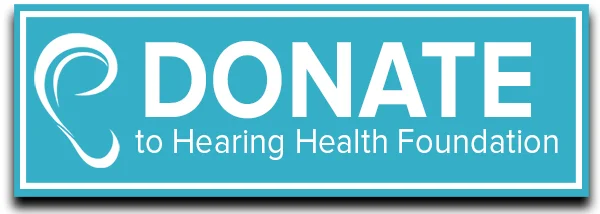By Laura Friedman
Hearing Health Foundation and Hearing Charities of America Join Forces
Hearing Charities of America (HCOA) and Hearing Health Foundation are excited to announce a newly formed partnership in an effort to collect hearing aids that will be given to low-income individuals through the HCOA’s national assistance program, The Hearing Aid Project.
One quarter of Americans ages 20 to 65 suffer from hearing loss, which makes it one of the country’s most widespread public health concerns. The Hearing Aid Project was created to provide access to affordable hearing health services, while creating collaborative relationships to support this mission.
Countless hearing aids sit unused in drawers or are discarded once new hearing aids are purchased. Hearing Health Foundation is now a collection center for The Hearing Aid Project to ensure that quality, donated hearing aids can be refurbished and given to those in need.
“Hearing Health Foundation is thrilled to join forces with Hearing Charities of America and do our part in collecting hearing aids to be refurbished and distributed to those who need them,” said Nadine Dehgan, HHF’s CEO. “Minimal health insurance and Medicare coverage, as well as out-of-pocket costs, have been a major hurdle for many who could benefit from using hearing aids. Until quality hearing healthcare is available to all of the 48 million Americans living with hearing loss, HHF is glad to be doing its part to provide hearing aid assistance to those in need,” Dehgan said.
Hearing Charities of America and Hearing Health Foundation believe that healthy hearing should be enjoyed by all. To donate your hearings aids to be refurbished, please contact Hearing Health Foundation at info@hhf.org or 212-257-6140.
THE HEARING HEALTH CHALLENGE
In celebration of Better Hearing and Speech Month in May, Hearing Health Foundation is launching the Hearing Health Challenge. Although hearing loss is commonly associated with one’s normal aging process, more than half of those with hearing loss are younger than 65. The top two war wounds for active military personnel and veterans are hearing loss and tinnitus, accounting for 60 percent of this population.
Unfortunately, only 13 to 33 percent of those who need hearing aids use them; financial constraints, the lack of a perceived need, and stigma are leading reasons why hearing loss goes untreated for an average of 7 to 10 years after diagnosis. Hearing Health Foundation is committed to reducing the stigma, educating the public on the dangers of noise, advocating for greater access to hearing health care, and funding the best science to find better treatments and cures for hearing loss and its associated disorders.
CHALLENGE
For every hearing aid received within the month of May, a $200 cash donation will be made to HHF by an anonymous donor to support hearing research.
For every dollar donated within the month of May, that dollar will be matched up to $33,500 by an anonymous donor to support hearing research.















